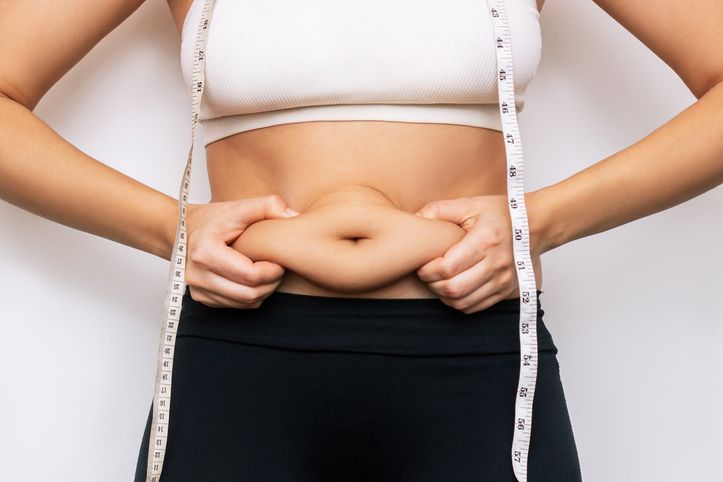- Home
- Trend
- Weight Loss Strategies
- Acne Tips
- Hair Health Information
- Blemish Removal Tips
- Acne Scar Removal Tips
- Muscle Building Techniques
- Intimate Care Tips
- Postpartum Intimate Care
- Eye Bags Wiki
- Tips for Face Slimming
- Secret of Permanent Hair Removal
- Breast Enlargement Tips
- Cure to Snoring
- Marionette Lines
- Skin-Tightening Secrets

免費體驗
S6 Body Sculpting Treatment
1 Minute Self-Registration
Date should not be before minimal date
Have you ever been in awe of Chris Hemsworth's sculpted physique or Jennifer Aniston's timeless glow? It turns out, their secret might not lie solely in rigorous workouts or strict dieting regimes. Enter Intermittent Fasting (IF) - a strategy that has not only shaped Hollywood's elite but also promises vibrant energy and cellular health. Eager to learn more? You're in the right place! This blog serves as your comprehensive guide to the science and practicalities of IF. We'll delve into the various intermittent fasting plans, helping you find one that seamlessly integrates into your lifestyle, and offer tips to enhance your experience. Grab your water bottle (don't forget to stay hydrated!) and join us on this journey towards a healthier, radiant version of yourself. Ready to shine like a star? Let's get started!
1
The Science Behind Intermittent Fasting

Intermittent Fasting simplifies your day into eating and fasting windows. This pattern not only shifts your body from relying on glucose for energy to burning stored fat but also engages a fascinating biological transformation. Let’s break it down:
The Metabolic Shift
Typically, your body powers itself with glucose, supplied by food, with a little help from insulin. However, intermittent fasting introduces a pivotal shift—your body decreases its dependence on glucose. Instead, it begins to convert stored fat into ketones, an efficient alternative fuel. This transition from glucose to ketones is fundamental to the benefits IF offers.
Hormonal Harmony
Intermittent fasting induces notable changes in your body's hormone levels:
Insulin: Levels drop during fasting, making it easier for your body to break down fat. Glucagon: Increases, facilitating the conversion of fat into ketones. Human Growth Hormone (HGH): Intermittent fasting can significantly enhance HGH production, which supports fat loss, muscle gain, and tissue repair. Leptin: While initially leptin levels decrease (triggering hunger signals), they stabilize over time, adapting to your fasting routine. Adiponectin: Rises, improving the regulation of blood sugar levels.
These hormonal adjustments collectively support the metabolic shift, promoting weight management, blood sugar balance, and opening the door to a range of health benefits associated with intermittent fasting.
2
Health Benefits of Intermittent Fasting

Intermittent fasting transcends simple meal skipping; it's a structured approach to eating and fasting that nudges your body to switch from using glucose to tapping into stored fat for energy. This not only facilitates weight loss and fat reduction but also offers the perks of traditional calorie restriction diets without the hassle of constantly tracking every bite.
Intriguingly, intermittent fasting interacts with our hunger hormones, such as leptin and ghrelin, in a way that naturally diminishes appetite and reduces overall calorie intake, potentially boosting your metabolic rate to aid in weight management.
Let's explore the stages your body goes through from your last meal to when it begins burning fat:
1. Pre-Fasting State: Immediately after eating, your body utilizes glucose from your meal for energy, with insulin guiding glucose into cells. Fat storage waits its turn, not yet in the spotlight.
2. Early Fasting State (3-4 hours after eating): As blood sugar levels dip, the body taps into glycogen reserves in the liver and muscles. Glucagon becomes more active, converting glycogen back to glucose for energy.
3. Late Fasting State (around 18 hours after eating): With glycogen stores depleting, the body shifts focus. Lower insulin and higher glucagon levels prompt the breakdown of stored fat into free fatty acids for energy.
4. Ketosis (24-48 hours of fasting): Without glucose, the liver starts converting a substantial amount of free fatty acids into ketones, which serve as essential fuel for the body, including the brain, highlighting the body's incredible adaptability.
Enhanced Blood Sugar Control
Intermittent Fasting shines a hopeful light for those managing blood sugar. By boosting insulin sensitivity and potentially reducing blood sugar levels, IF represents a proactive stance against type 2 diabetes, underscoring its ability to foster a more responsive metabolic state.
Cellular Renewal and Longevity
Beyond external changes, intermittent Fasting may promotes internal cell rejuvenation. Autophagy, activated by fasting, acts as cellular detox, clearing out damaged cell parts to pave the way for new growth. This not only aids in longevity but also minimizes inflammation, reducing the risk of chronic diseases.
Mental Clarity and Neuroprotection
The benefits of IF also extend to cognitive health. Early research suggests that IF could sharpen mental functions and protect against neurodegenerative diseases such as Alzheimer's. Though further studies are needed, the prospect of IF supporting brain health is promising.
Cardiovascular and Metabolic Health
Heart health and metabolic syndrome are within IF's scope. Preliminary research indicates improvements in blood pressure, cholesterol levels, and other metabolic syndrome risk factors, suggesting a heart-healthy lifestyle and advancements in managing metabolic health issues.
3
Explore Different Intermittent Fasting Schedules

Here's a breakdown of various types of intermittent fasting methods based on the provided webpages.
16/8 Method:
Looking for a simple and adaptable way to try intermittent fasting? Look no further than the 16/8 method! This popular approach involves fasting for 16 hours and squeezing all your eating into an 8-hour window.
The beauty lies in its flexibility – you can tailor it to your routine, whether that's noon to 8 pm or a 9 am to 5 pm window.
Bonus points? Studies suggest the 16/8 method can be just as effective for weight loss as traditional calorie restriction in the long term!
Fasting Window (16 hours): Let's say you choose a noon to 8 pm eating window. Your fast would begin at 8 pm and last until noon the next day. During this time, you would only consume calorie-free beverages like water, black coffee, or unsweetened tea.
Eating Window (8 hours): Between noon and 8 pm, you can consume all your meals and snacks for the day. This could involve:
- Lunch at noon - Afternoon snack (optional) - Dinner between 6-8 pm
Sample Successful Diet (Focus: Balanced Macronutrients, Weight Loss):
- Fasting Window (16 hours): Stick to water, black coffee, and unsweetened tea. Adding electrolytes can help maintain hydration and mineral balance. - Eating Window (8 hours): * Breakfast (9:00 AM): Greek yogurt with berries, granola, and a drizzle of honey (20g protein, 15g fat, 30g carbs) * Lunch (1:00 PM): Grilled chicken breast with a side salad and quinoa (40g protein, 5g fat, 40g carbs) * Snack (4:00 PM): Apple slices with almond butter (5g protein, 10g fat, 20g carbs) * Dinner (7:00 PM): Salmon with roasted vegetables and brown rice (30g protein, 15g fat, 40g carbs)
Tips: Start with a shorter fasting window, such as 14/10, and gradually increase to 16/8 as your body adjusts. Stay hydrated throughout your fasting period to support overall health and help curb hunger. Focus on nutrient-dense, unprocessed foods to maximize health benefits. Incorporate a balanced mix of protein, healthy fats, and complex carbohydrates to keep you feeling satisfied and energized.
5:2 method:
Prefer a more flexible approach? The 5:2 method might be your perfect fit!
This plan allows you to eat normally for five days of the week, giving you freedom and room for your favorite foods. But here's the twist: on the remaining two non-consecutive days, you'll restrict your calorie intake to around 500-600.
It's a great way to incorporate fasting benefits without feeling overly restricted throughout the week.
Eating Days (5 days): Follow a normal healthy eating pattern, aiming for balanced meals and portion control.
Fasting Days (2 non-consecutive days): Restrict your calorie intake to 500-600 calories for the entire day. You can spread these calories out into small meals or snacks throughout the day, or choose a single small meal.
Here is an example schedule for a 5:2 schedule (fasting on Monday and Thursday):
- Sunday: Regular Eating Day - Monday: Fasting Day (500-600 calories) - Tuesday: Regular Eating Day - Wednesday: Regular Eating Day - Thursday: Fasting Day (500-600 calories) - Friday: Regular Eating Day - Saturday: Regular Eating Day
Sample Successful Diet (Focus: Weight Management, Blood Sugar Control):
- Eating Days (Maintain a balanced diet with moderate calorie intake): * Breakfast: Oatmeal with berries and chia seeds (20g protein, 5g fat, 40g carbs) * Lunch: Chicken salad sandwich on whole-wheat bread with a side salad (30g protein, 10g fat, 40g carbs) * Dinner: Salmon with roasted Brussels sprouts and quinoa (40g protein, 15g fat, 30g carbs) * Snacks: Fruits and vegetables with a handful of nuts - Fasting Days (Focus on nutrient-dense, low-calorie options): * Breakfast: Vegetable broth with a small side salad (5g protein, 5g fat, 10g carbs) * Lunch: Lentil soup with a small whole-wheat roll (15g protein, 5g fat, 20g carbs) * Dinner: Stir-fried vegetables with tofu and a small portion of brown rice (20g protein, 10g fat, 25g carbs)
Tips: Plan your low-calorie days strategically to avoid disrupting your social life. Choose nutrient-dense foods on low-calorie days, such as vegetables, fruits, lean protein sources, and whole grains. Ensure you stay hydrated throughout the fasting days.
Eat Stop Eat:
Up for a more intense challenge?
The Eat-Stop-Eat (ESE) method involves tackling a full 24-hour fast, once or twice a week.
This approach can be very effective, but be prepared for some adjustment.
Fasting Day (24 hours): Choose a day (e.g., Wednesday) to completely abstain from food for 24 hours. You can consume calorie-free beverages like water, black coffee, or unsweetened tea during this period.
Eating Days: On non-fasting days (e.g., Tuesday and Thursday), follow a normal healthy eating pattern.
Here is an example schedule for the Eat-Stop-Eat schedule (fasting on Wednesday):
- Tuesday: Regular Eating Day - Wednesday: Fasting Day (No food for 24 hours starting from dinner on Tuesday) - Thursday: Regular Eating Day - Friday: Regular Eating Day - Saturday: Regular Eating Day - Sunday: Regular Eating Day - Monday: Regular Eating Day
Sample Successful Diet (Focus: Cellular Health, Metabolic Benefits):
- Eating Day (Prioritize nutrient-dense foods to support a long fasting window): * Breakfast (post-fast): Smoothie with protein powder, spinach, banana, and almond milk (30g protein, 10g fat, 40g carbs) * Lunch: Chicken breast with roasted sweet potato and mixed greens (40g protein, 15g fat, 40g carbs) * Dinner: Salmon with roasted vegetables and quinoa (30g protein, 20g fat, 50g carbs) * Snacks: Fruits, vegetables with hummus, or a handful of nuts and seeds throughout the day to maintain energy levels
Tips: Ensure the day before your fast is a healthy, fulfilling eating day that provides your body with essential nutrients. When your fast ends, break your fast with a light, easily digestible meal to ease your digestive system back into function. If you experience excessive hunger or dizziness during the fasting window, adjust your plan accordingly.
Alternate-Day Fasting:
For Alternate-Day Fasting (ADF), you alternate between regular eating days and dedicated fasting days.
On fasting days, your calorie intake takes a nosedive, typically restricted to around 500-600 calories.
While this approach can be effective, the potential for hunger pangs and dips in energy on fasting days can be a real challenge.
Fasting Day: On designated fasting days (e.g., Mondays, Wednesdays, Fridays), significantly restrict your calorie intake. This typically involves consuming around 500 calories for the entire day.
You can spread these calories out into small, healthy meals or snacks throughout the day, or choose a single small meal.
During this time, you can consume calorie-free beverages like water, black coffee, or unsweetened tea.
Eating Day: On non-fasting days (e.g., Tuesdays, Thursdays, Saturdays, Sundays), follow a normal healthy eating pattern.
Focus on balanced meals with portion control to ensure you meet your nutritional needs.
Example Schedule for Alternate-Day Fasting (Fasting on Mondays, Wednesdays, and Fridays):
- Sunday: Regular Eating Day - Monday: Fasting Day (500 calories) - Tuesday: Regular Eating Day - Wednesday: Fasting Day (500 calories) - Thursday: Regular Eating Day - Friday: Fasting Day (500 calories) - Saturday: Regular Eating Day
Sample Successful Diet (Focus: Weight Loss, Blood Sugar Management):
- Eating Days (Maintain a balanced diet with a moderate calorie deficit): * Breakfast: Scrambled eggs with spinach and whole-wheat toast (25g protein, 10g fat, 30g carbs) * Lunch: Tuna salad sandwich on whole-wheat bread with a side salad (30g protein, 15g fat, 30g carbs) * Dinner: Vegetarian chili with lentils, black beans, and brown rice (30g protein, 10g fat, 50g carbs) * Snacks: Fruits and vegetables with a handful of almonds - Fasting Days (Focus on low-calorie, nutrient-dense options): * Breakfast: Green tea with lemon (0g protein, 0g fat, 0g carbs) * Lunch: Vegetable broth with a small side salad (5g protein, 5g fat, 10g carbs) * Dinner: Stir-fried vegetables with tofu and a small portion of quinoa (15g protein, 5g fat, 20g carbs)
Tips: Listen to your body. If you experience excessive hunger on fasting days, adjust your calorie intake accordingly. Plan your meals on eating days to ensure you meet your nutritional needs, especially regarding protein and fibre, to promote satiety and manage blood sugar levels.
Warrior Diet:
The Warrior Diet is the ultimate feast-or-famine IF approach!
This method mimics the eating patterns of ancient warriors: with a 20-hours long fasting window followed by a short, concentrated 4-hours window for eating.
While it can be appealing for its simplicity, be warned: it's also very restrictive and best suited for experienced athletes with the support of healthcare professionals.
This isn't a DIY approach! The extended fasting period can be quite challenging, and this method might not be suitable for everyone, especially those with specific health conditions or dietary needs.
Fasting Window (most of the day): Focus on water, black coffee, and unsweetened tea with electrolytes to keep yourself energized throughout the day. This can be a long stretch, so some variations allow for a small amount of fruits and vegetables in the morning.
Eating Window (4 hours; Post-Workout Meal Within 1-2 Hours of Training): This is your time to shine! Here's where you'll fuel your body with a nourishing meal that promotes recovery and keeps you feeling satisfied.
Chicken breast with brown rice and roasted vegetables is a famous combination that provides a good balance of protein, complex carbs, and healthy fats.
Tips: Ensure your single large meal is packed with nutrients. You can include a small pre-workout meal before your training window if needed.
Intermittent Fasting Schedules
Pros
Cons
Suitable For
16/8
Simple to adhere to, with a variable timeframe for consuming food
Might necessitate changes to your sleeping habits.
Suitable for those new to the concept or with hectic schedules.
5:2
Allows more leeway on which days to eat.
Demands self-control on days designated for fasting.
Ideal for those who find everyday limitations challenging.
Eat Stop Eat
Brief periods of fasting, beneficial for cell regeneration.
Initially, it might pose some difficulties.
For individuals aiming for metabolic health improvements.
Alternate-Day Fasting
Organized method.
Possibly not fitting for every level of physical activity.
Fits people who thrive on a consistent routine.
Warrior Diet
Beneficial for those in training, with an emphasis on the meal before exercising.
Necessitates meticulous planning of meals; consuming a large meal could be daunting.
Best for active individuals with efficient digestive systems.
4
How To Make Intermittent Fasting Right For You

Finding the ideal Intermittent Fasting (IF) approach is a personal journey that hinges on understanding your lifestyle, health, and how your body responds to fasting. Here’s how to align your choice with your individual needs:
Catering to Your Preferences
Lifestyle Compatibility: Assess your daily routine to identify which IF method naturally fits. If mornings are rushed, skipping breakfast might work best. Conversely, if evenings are your time for family dinners, consider a method that accommodates that.
Eating Habits: Are you a snacker or a meal-focused eater? Choose an IF plan that mirrors your innate eating style for a smoother transition.
Sustainability: The effectiveness of IF lies in consistency. Opt for a method that you see yourself following in the long run, ensuring it becomes a sustainable part of your lifestyle.
Considering Health Factors
Pre-existing Conditions: For those managing health issues like diabetes or hormonal imbalances, some IF schedules may be more suitable than others. Consultation with a healthcare provider is crucial to tailor IF to your health needs safely.
Medications: Medication schedules can impact your fasting windows. Working with a healthcare professional can help you navigate these considerations, ensuring your IF method complements your treatment plan.
Pregnancy and Breastfeeding: During pregnancy or breastfeeding, nutritional demands increase. IF might not be advisable in these stages, prioritizing nutritional adequacy and health.
Listening to Your Body
Weight Loss and Metabolic Health: Individual responses to IF vary. While one person may thrive on a 16/8 schedule, another might find alternate-day fasting more effective. It’s important to observe how your body reacts and adjust accordingly.
Energy Levels: The right IF method should ideally maintain or boost your energy levels. Notice how different fasting intervals affect your daily energy and choose accordingly.
Adaptability: Everyone's body adapts to fasting differently. While some may easily adjust to longer fasting periods, others might need to gradually extend their fasting time. Listening to your body and respecting its pace of adaptation is key.

免費體驗
S6 Body Sculpting Treatment
1 Minute Self-Registration
Date should not be before minimal date
5
Potential Risks and Tips on a Safe, Healthy and Successful IF Diet

While IF offers potential benefits, it's crucial to be aware of the drawbacks and potential dangers, especially if not approached thoughtfully. Here's a more detailed breakdown based on scientific evidence:
Nutrient Deficiencies:
Strict IF methods or failing to prioritize a balanced diet during eating windows can increase the risk of nutrient deficiencies. Individuals with pre-existing conditions or restrictive dietary patterns are at a higher risk.
The most commonly neglected nutrients are:
Micronutrients: Deficiencies in vitamins (e.g., vitamin B12, iron, vitamin D) and minerals (e.g., calcium, magnesium) are possible, especially with prolonged or restrictive fasting.
Electrolytes: Deficiencies in electrolytes like sodium, potassium, and magnesium can occur, particularly if not adequately replenished during fasting periods. This can lead to dehydration, muscle cramps, and fatigue.
Plan your meals with a large variety of vegetables, whole grains, healthy fats and proteins to ensure consumption of all necessary nutrients. Use supplements if necessary.
Muscle Loss:
Rapid weight loss (more than 1-2 pounds per week) or inadequate protein intake during eating windows can lead to muscle loss. Muscle mass is metabolically active and helps with calorie burning. Losing muscle can negatively impact metabolism and overall health.
Eating a large amount of protein is essential for maintaining muscle mass. Research indicates that combining IF with a high-protein diet (around 1.2-1.6 grams per kilogram of body weight) can help preserve muscle mass during fasting periods.
Pre-existing Medical Conditions:
Certain medical conditions can make IF unsafe or require careful monitoring. Consulting a healthcare professional before starting IF is crucial, especially if you have:
Diabetes: Blood sugar control can be affected by IF, and medication adjustments may be necessary.
Eating disorders: IF can trigger unhealthy eating patterns in individuals with a history of disordered eating.
Cardiovascular disease: For some with heart disease, IF may be safe, but close monitoring by a healthcare professional is essential.
Kidney disease: The stress of fasting on the kidneys needs to be evaluated by a healthcare professional before attempting IF.
Polycystic ovary syndrome (PCOS): IF may impact hormone regulation in women with PCOS.
Long-Term Medications Intakes: Medications for heartburn or acid reflux may need to be taken with food to minimize stomach upset; certain diabetes medications can cause hypoglycemia (low blood sugar) if not taken with food.
6
Experience Effortless and Safe Weight Loss: S6 Body Sculpting Treatment

Perfect Medical's S6 Body Sculpting Treatment is a groundbreaking approach to achieving your desired body shape without invasive procedures. This state-of-the-art, non-invasive method seamlessly eliminate persistent fat, ensuring there's no chance of weight regain!
The treatment utilizes potent bio-laser energy to precisely target and dissolve unwanted fat cells. Following this, advanced vacuum suction technology speeds up lymphatic drainage of the liquefied fatty acids.
The S6 method effectively reduces hard-to-lose fat in areas such as the waist, belly, arms, thighs, and beyond.
Moreover, the bio-laser's energy promotes collagen production, leading to skin tightening and a reduction in cellulite, resulting in a toned and attractive body curve.
With no need for cuts, drugs, or injections, the S6 treatment offers a completely safe transformation. Experience noticeable enhancements from the very first session, with enduring outcomes that can last up to three years. Achieve significant slimming effects in your preferred body areas with just 10 easy and comfortable sessions!
Step closer to the body you've always desired. Get your free trial of the S6 Body Sculpting Treatment, completed with a complimentary professional body profile assessment!

免費體驗
S6 Body Sculpting Treatment
1 Minute Self-Registration
Date should not be before minimal date
FAQ

What is intermittent fasting?
Intermittent fasting (IF) involves cycling between periods of eating and fasting. It doesn't specify which foods to eat but rather when you should eat them. Common methods include the 16/8 method, where you fast for 16 hours and eat during an 8-hour window, and the 5:2 method, which involves eating normally for five days and restricting calories for two non-consecutive days each week.
Is intermittent fasting safe for everyone?
While IF is safe for most healthy adults, it's not suitable for everyone. Individuals with medical conditions, pregnant or breastfeeding women, and those with a history of eating disorders should consult a healthcare professional before starting IF. Personal health should always guide dietary choices.
Does intermittent fasting cause muscle loss?
Intermittent fasting does not cause more muscle loss than other weight loss methods, provided you consume enough protein and maintain an active lifestyle. In fact, the increase in growth hormone levels during fasting periods may even protect muscle mass.
How long does it take to see results from intermittent fasting?
Results from intermittent fasting can vary widely among individuals. Some may notice changes within a few weeks, while for others, it might take a few months. Consistency and adherence to your chosen fasting method, along with a balanced diet and regular exercise, are key to seeing results.
Can I exercise while fasting?
Yes, exercising while fasting is safe and can even enhance fat loss. However, the intensity and duration of exercise might need adjustment based on how you feel during fasting periods. Many find that low to moderate-intensity workouts are more comfortable on an empty stomach.








